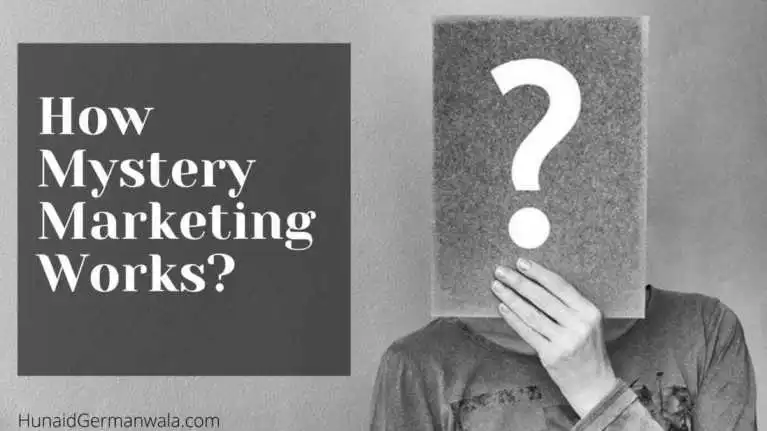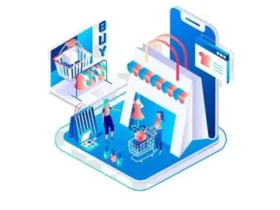MysteryConsider including a bit of mystery in your overall digital marketing strategy.
Mystery and controversy marketing refer to a marketing strategy where brands intentionally create mystery or controversy around their products or campaigns to generate buzz, intrigue customers, and gain attention in the marketplace. This approach relies on leveraging curiosity, speculation, and public interest to create a sense of anticipation and excitement among consumers.
Mystery Marketing
Brands often create mystery and a little controversy as a by-product to get effectively noticed. For start-ups and relatively unknown brands, such marketing techniques help them stand out. Of course, the strategy requires considering all the risk factors and possible repercussions.
The idea is to make your customers happy and surprise them when they least expect it.
When used on a specific segment of customers or during strategic days of the year, the shock and awe marketing tactic creates a long-lasting business relationship and customer loyalty.
Example of Shock and Awe Strategy
Create a few mystery coupon codes applicable to low-value but high-demand products that you can afford to give away for free. For special days such as Black Friday or Cyber Monday, have a mystery budget of $500 or$ 1000. The mystery coupon code will make the product free when applied at the checkout.
You can tell customers that they have unlocked a secret deal ‘Enjoy the product for free, along with a message that asks them to share the coupon code with more people on social media.
For caution, make the coupon code applicable only once per user per quantity. Set the limit of code usage per item. Have this mystery offer valid for a very short window. You can always add the ‘exclusions apply‘ tag on the offer.
The coupon code with your brand name would go viral on social media if promoted well, and more and more people would visit your website to unlock such mystery deals to get free products.
Acquisition and Loyalty through Mystery Marketing
Mystery marketing is applied to keep certain aspects of a product, campaign, or event under wraps, allowing only limited information to be revealed. By teasing and hinting at what’s to come without providing full details, companies aim to pique curiosity and generate anticipation among their target audience. This can be done through teaser trailers, cryptic messages, hidden clues, or interactive experiences that require audience engagement to uncover more information.
The most important aspect of such a marketing tactic is building an email subscriber list, social media followers, and PR visibility. Don’t forget to inform and provide your new customers with Reward Points (or Cashback), which they can use on their next purchase to enable repeat purchases.
If you have a close relationship with clients, send them a surprise kit of your selected products on special occasions to make them feel special and cared for. Gillette has been sending free razors to young men for their 18th birthdays since the 1990s. The strategy has helped the company build a brand name and grow its market share over time. Many young men still remember the pleasant surprise they received from Gillette on their 18th birthday.
Surprise in Marketing Mix
People often enjoy surprises and the euphoria of winning something, no matter the product’s value. It creates special memories which they cherish and share with others for a long time.
10 Elements of Mystery and Controversy Marketing
-
Generating curiosity
This strategy capitalizes on people’s natural curiosity and desire for information. By creating an aura of mystery around a product or campaign, marketers pique interest and encourage consumers to seek out more information.
-
Teasers and cryptic messaging
Marketers release intriguing snippets of information, mysterious images, or cryptic messages to generate curiosity and speculation among the audience. These teasers may hint at an upcoming product launch, event, or announcement without revealing all the details. It leaves consumers wanting more and sparks conversations.
-
Viral campaigns
By creating controversial or thought-provoking content, marketers aim to generate buzz and encourage people to share and discuss it on social media platforms. The goal is to spark conversations and engage a wider audience, leveraging the power of word-of-mouth marketing.
-
Social media engagement
Mystery and controversy marketing heavily rely on social media platforms to create buzz. Mystery Companies may utilize platforms like Twitter, Instagram, or YouTube to tease, engage with followers, and generate discussions around their enigmatic campaigns.
-
Unconventional storytelling
Brands may develop narratives or stories that captivate consumers’ attention and leave them wanting to know more. This can involve creating enigmatic characters, plot twists, or ambiguous endings that generate discussions and keep the audience engaged.
-
Limited information and exclusivity
Marketers deliberately limit the amount of information available about a product or campaign, creating an aura of exclusivity. This can include secretive product releases, invite-only events, or limited-time offers aiming to enhance the perceived value and desirability of the offering.
-
Unconventional campaigns
Mystery and controversy marketing often involve unconventional approaches that challenge the norm. This could include viral campaigns, guerrilla marketing tactics, or provocative advertisements that generate controversy and capture attention.
-
Controversial or provocative content
Brands may take a bold or polarizing stance on a particular issue, sparking debates and attracting attention from various segments of the population. This approach can be risky, as it may alienate some consumers while resonating strongly with others who align with the brand’s values.
-
Risk of backlash
While generating controversy can attract attention, it also carries the risk of alienating or offending certain audiences. Marketers must carefully consider the potential negative consequences and weigh them against the desired impact.
-
Call to action
Ultimately, mystery and controversy marketing aims to drive action, such as product sales, website visits, or increased brand engagement. Marketers carefully plan the reveal or launch event to capitalize on the built-up anticipation and convert interest into action.
Controversy Marketing
Pure Controversy marketing involves deliberately provoking controversy or debate around a brand or its offerings. This strategy relies on tapping into sensitive or polarizing topics, pushing boundaries, or challenging societal norms to generate attention and discussion. Controversial advertisements, provocative slogans, or campaigns that challenge conventional thinking are examples of how brands may employ this approach.
Both mystery and controversy marketing can be effective in capturing the attention of consumers, creating a sense of exclusivity, and driving engagement. It can be employed to stand out in a crowded marketplace. However, it is important for brands to tread carefully and consider the potential risks involved. It can be a double-edged sword.
While these strategies can generate buzz, they also carry the potential for backlash, negative publicity, or alienating certain segments of the audience. It is crucial for companies to strike a balance between creating intrigue and maintaining brand integrity, ensuring that the resulting discussions and perceptions align with their overall marketing objectives.
Brands must be mindful of ethical considerations and ensure that the controversy or mystery created aligns with their brand values and overall marketing objectives. Careful planning, understanding the target audience, and considering the potential consequences are essential elements to ensure the effectiveness and long-term success of such marketing strategies.

Hunaid Germanwala is a digital marketer and content creator at Health Products For You since 2014. He has an MS from Ulm University in Germany. His mind is always buzzing with creative ideas and is eager to explore new perspectives. His motto in life is “Better to Light the Candle than to Curse the Darkness.”














Leave a Reply